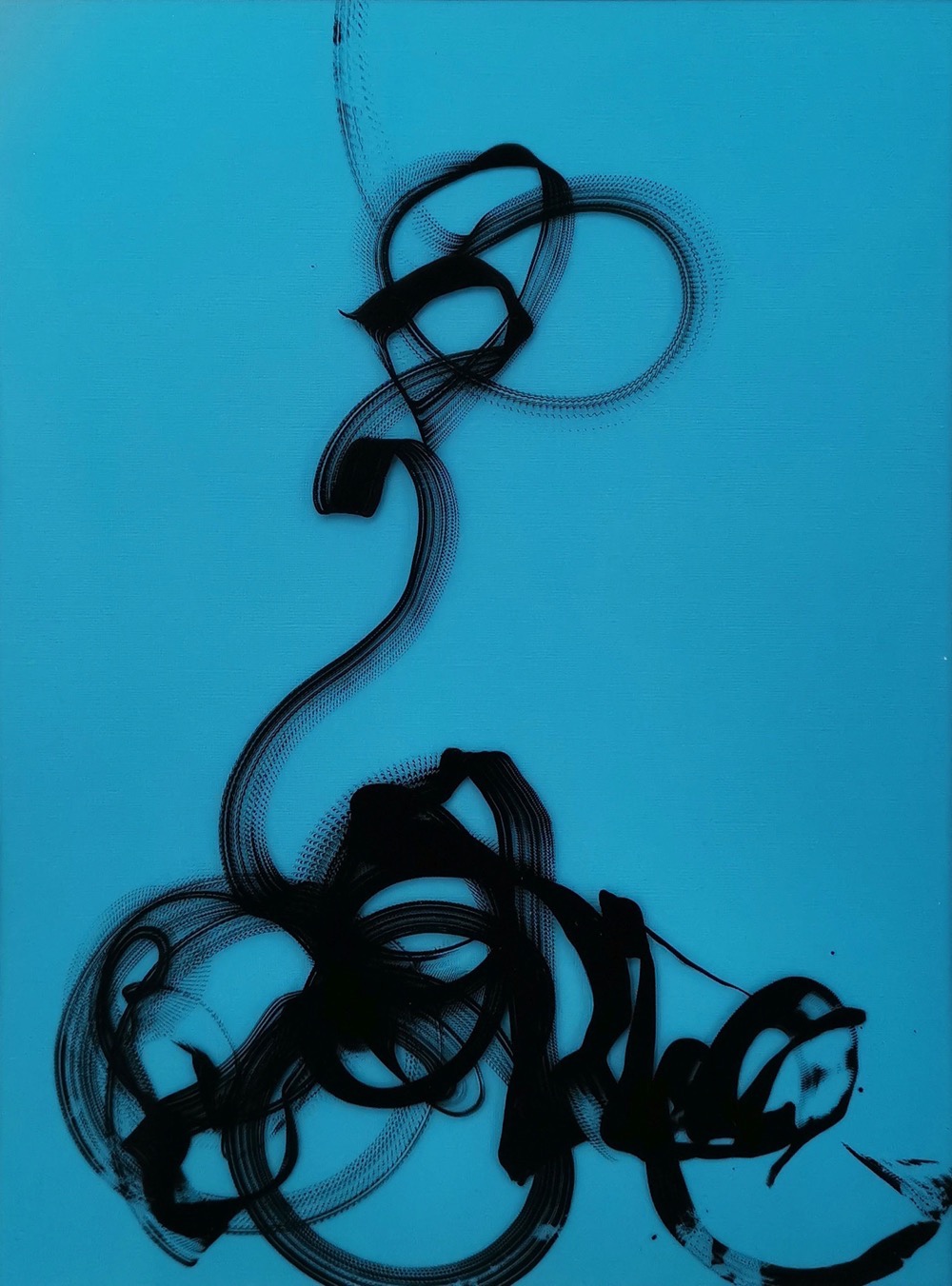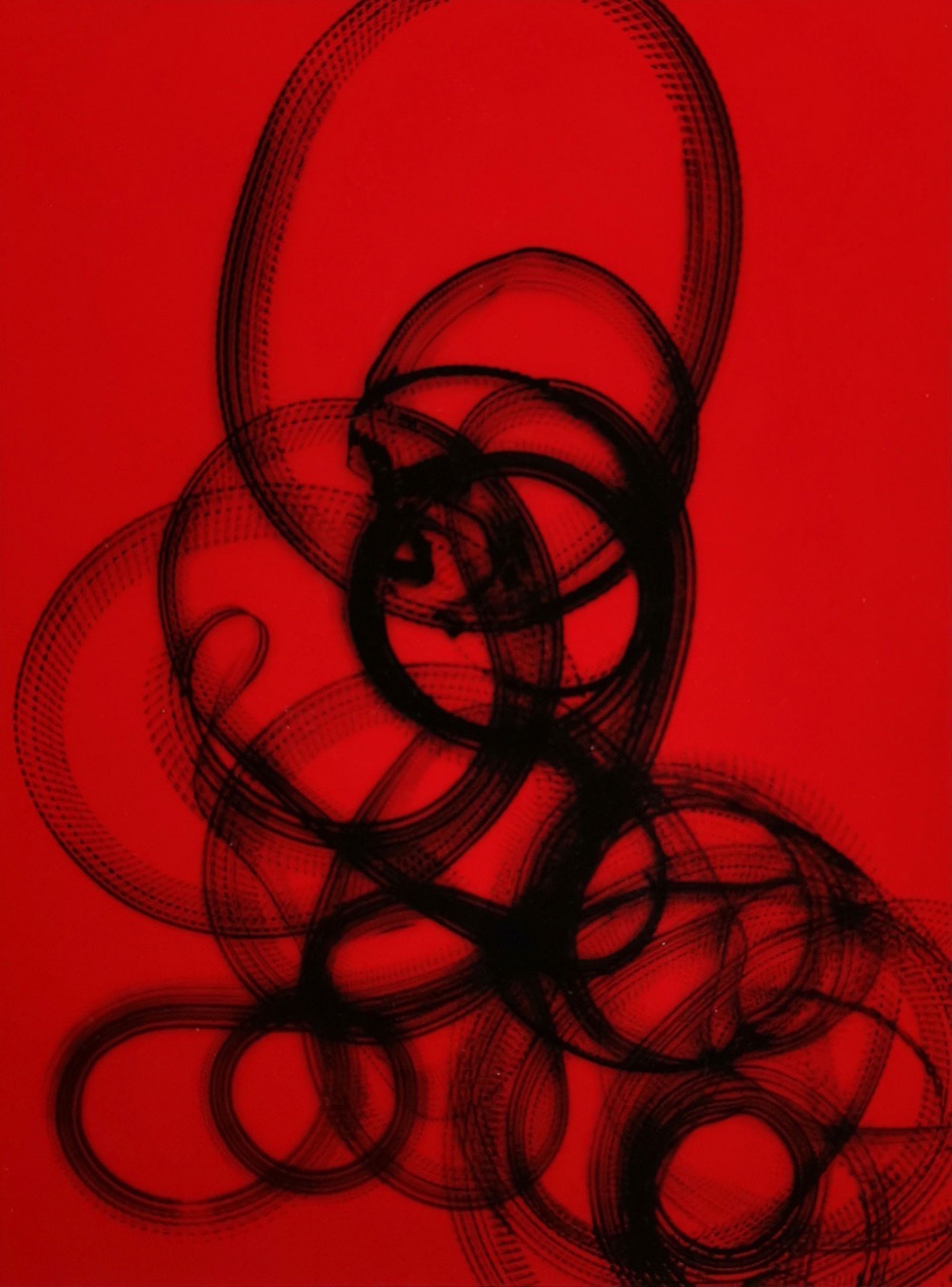The drawings are reminiscent of action paintings, expressing the subconscious. Only here, the subconscious is that of an assemblage (the gadget and my body) and the marks on the surface, an impression of desires, arising, not from a lack but in a hope of creating new interventions (Gilles Deleuze 154-157). The machine-like imprint and fluid squiggles, highlight the integration of human and technology that produce these marks, at the same time, disintegrating the standard binary. The alien marks delink the gadget from its sexual history and in this strange space, it operates as a new assemblage that regenerates thinking, beyond social norms. The surfaces imprinted, challenge the public/private values of the device. Drawings on bricks, outdoor spaces, tin foils, metal paper, and rice paper carry notions of bastardization – a monstrosity of not conferring to set boundaries but overcrossing, rejoicing in this illegitimate fusion of human and machine (Haraway 176). A process of ‘becoming’ with no particular end (Gilles Deleuze 162).
The Floor Drawing resembles the principles of action painting as mentioned by Harold Rosenberg “an act of performance within the ‘arena’ of the canvas” (A. Jones 72). The floor drawing is an act of performance, expressed by the movement of the assemblage effecting visceral traces.
The process of mark-making through such an assemblage evokes binary terror – a deterritorialization abstracted from the politics of a given norm and which extends to the construction of new lines of flight (Gilles Deleuze 157). The drawings created in public spaces, further debase the vibrator’s anti-reproductive function and succeed in highlighting the idea of self-pleasure as waste. The extensive, machine-like imprints mock the social notion of the assemblage as a self-indulging, wasteful and immoral union.
The Chinese scrolls mock the male-dominated domain of Chinese calligraphy. Male Chinese calligraphers were revered for their vigorous strokes, spontaneous creativity and unpretentious clumsiness in their work. Calligraphy being a cultural requirement of the gentry official class of imperial China left out women calligraphers to create elegant works, and pretty with cleaner strokes and mainly passive. It was believed that in women’s writing “outpouring energy can be seen as indicative of ambition trespassing into the male’s domain”. Like the cultural desirability of the female body, women’s calligraphy was appreciated in its order, clarity, and restraint (Yen 130-131).

Title: Rainbow Arch #208
Size: 42 x 59.4 cm
Medium: ACRYLIC INK ON ACID FREE CARTRIDGE PAPER
Year: 2019

Title: Lightning Strike #114
Size: 42 x 59.4 cm
Medium: ACRYLIC INK ON ACID FREE CARTRIDGE PAPER
Year: 2019

Title: Clasping #82
Size: 42 x 59.4 cm
Medium: ACRYLIC INK ON ACID FREE CARTRIDGE PAPER
Year: 2019



Title: Her Pleasure (Floor Drawing)
Medium: Chinese ink on floor
Year: 2018



Title: Chinese Scrolls; Vibrator drawing 1/2/3
Medium: Chinese ink on rice paper
Year: 2017

Title: Soft Vertical
Size: 19.5 x 28 cm
Medium: Calligraphy INK ON Coloured Acrylic framed in a light box
Year: 2019

Title: Quick Horizontal
Size: 19.5 x 28 cm
Medium: Calligraphy INK ON Coloured Acrylic framed in a light box
Year: 2019

Title: Gentle Circular
Size: 19.5 x 28 cm
Medium: Calligraphy INK ON Coloured Acrylic framed in a light box
Year: 2019

Title: Desire Lines 1.1, 2019
Medium: Black calligraphy ink on coloured acrylic
Size: 29.7 x 42.0 cm

Title: Desire Lines 1.2, 2019
Medium: Black calligraphy ink on coloured acrylics – yellow and blue
Size: 29.7 x 42.0 cm

Title: Desire Lines 1.3
Medium: Black calligraphy ink on coloured acrylic
Size: 29.7 x 42.0 cm

Title: Desire Lines 1.4, 2019
Medium: Black calligraphy ink on coloured acrylics – yellow and red
Size: 29.7 x 42.0 cm

Title: Desire Lines 1.5, 2019
Medium: Black calligraphy ink on coloured acrylic
Size: 29.7 x 42.0 cm

Title: Desire Lines 1.7, 2019
Medium: Black calligraphy ink on coloured acrylic, reflective surface
Size: 29.7 x 42.0 cm



